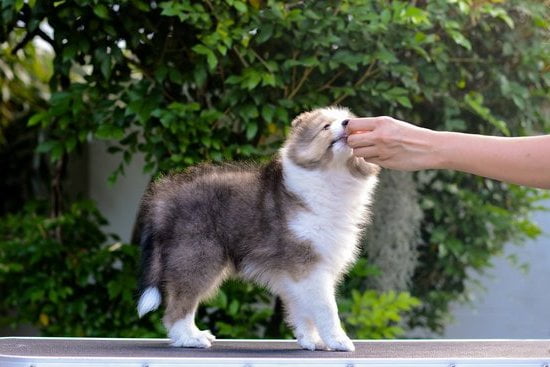Are you wondering how to train your dog to drop the ball in fetch? Teaching your furry friend this skill is not only fun, but also has numerous benefits for both you and your pet. From fostering a strong bond to providing mental and physical stimulation, mastering the art of fetch can be a rewarding experience for dogs and their owners alike.
Understanding the natural instinct for dogs to chase and retrieve objects is crucial when it comes to training them in the art of fetch. It taps into their innate desire for play and exercise, making it an activity that can keep them engaged and entertained. In this article, we will delve into the psychology behind fetch play and how understanding your dog’s instincts can aid in effective training.
Before diving into fetch training, it’s important to prepare with the right tools and equipment. A reliable fetch toy and treats are essential components for successful training sessions.
Additionally, establishing a foundation of basic obedience commands like sit and stay is crucial before advancing to teaching the “drop it” command during fetch play. In this section, we will discuss the necessary preparations needed to set you and your canine companion up for success in learning how to drop the ball in fetch.
Understanding the Fetch Instinct
The Natural Instinct
Dogs have a natural instinct to chase and retrieve objects, making fetch an enjoyable and fulfilling activity for them. This instinct can be traced back to their ancestors, who were hunters and scavengers. When a dog chases after a ball or toy, it triggers their prey drive, leading to a sense of excitement and fulfillment when they successfully retrieve the object.
The Psychology Behind Fetch Play
Fetch play also offers mental stimulation for dogs. It allows them to engage in problem-solving as they track and chase the object. This type of mental exercise is important for maintaining their overall cognitive health. Additionally, fetch play can help alleviate boredom and excess energy, reducing the likelihood of destructive behaviors. The act of retrieving also provides a sense of accomplishment for dogs, helping to boost their confidence and strengthen the bond between owner and pet.
The Bonding Aspect
Moreover, fetch play serves as an opportunity for owners to connect with their dogs on a deeper level. The cooperative nature of fetch encourages communication between human and canine. Understanding the psychology behind fetch play can provide valuable insights into how to effectively train and engage in this activity with your dog while strengthening your relationship with one another.
Preparing for Training
When preparing to train your dog to drop the ball in fetch, it is important to have the right tools and equipment on hand to ensure a successful training experience. One of the most critical items you will need is a reliable fetch toy. This could be a tennis ball, frisbee, or any other object that your dog enjoys chasing and retrieving. It’s important to choose a toy that is durable and safe for your dog to play with.
In addition to a fetch toy, it’s essential to have an ample supply of treats on hand. Treats are an incredibly effective tool for positive reinforcement during training sessions. Choose treats that are small, tasty, and highly motivating for your dog. These treats will serve as rewards for your dog’s good behavior during fetch training.
Another helpful piece of equipment to have when preparing for fetch training is a long leash or training lead. This will allow you to maintain control over your dog during training sessions while still giving them the freedom to run and play. A secure collar or harness should also be used to ensure the safety of your dog during training activities.
By having these essential tools and equipment prepared before starting your fetch training sessions, you can set yourself and your dog up for success from the beginning. With the right toys, treats, and safety measures in place, you can focus on teaching your dog how to drop the ball in fetch effectively without any distractions or setbacks.
Basic Obedience Training
Before engaging in fetch training, it is essential to ensure that your dog has mastered basic obedience commands. Commands such as sit and stay create the foundation for successful fetch training by establishing a level of control and responsiveness in your dog. When a dog can reliably obey these fundamental commands, they are more likely to understand and follow the instructions for fetch training.
Basic obedience training sets the stage for effective communication between you and your dog. It establishes a level of trust and understanding, making it easier to introduce new commands and activities. By teaching your dog foundational obedience skills, you are laying the groundwork for a strong relationship based on mutual respect and cooperation.
In addition to facilitating successful fetch training, basic obedience commands also serve practical purposes in everyday life. Sit and stay, for example, can be valuable in keeping your dog safe in various situations by preventing them from running into danger or causing disruptions. Whether at home or out in public, having an obedient dog makes for a more harmonious and enjoyable companionship. Therefore, investing time and effort into basic obedience training ultimately benefits both you and your beloved canine companion.
Teaching the Drop It Command
Training a dog to drop the ball in fetch is an essential skill that can enhance the playing experience for both the owner and the pet. This training not only adds a new level of control to the game but also helps to reinforce obedience and responsiveness in the dog. Teaching the “drop it” command is a fundamental aspect of fetch training, and it is important to approach this process with patience and consistency.
To effectively teach a dog to release the ball on command, positive reinforcement techniques are essential. Here are some step-by-step instructions on how to achieve this:
1. Start with basic obedience training: Before delving into fetch-specific commands, ensure that your dog has a solid understanding of foundational obedience commands such as “sit,” “stay,” and “come.” These commands provide a framework for further training and establish your position as the leader.
2. Introduce the “drop it” command: Once your dog has mastered basic obedience, introduce the “drop it” command during regular playtime. When your dog has picked up a toy or ball, hold out a treat and give the verbal command “drop it.” As soon as your dog releases the object, immediately reward them with praise and the treat.
3. Practice consistently: Repetition is key to reinforcing this command. Dedicate regular practice sessions specifically for teaching your dog to drop the ball on command. Gradually reduce the need for treats as your dog becomes more consistent in responding to the verbal cue.
By following these step-by-step instructions and maintaining patient, consistent training sessions, you can effectively teach your dog to release the ball on command using positive reinforcement techniques. This will not only improve their fetch game but also strengthen their overall obedience and responsiveness.
Practicing the Release
To begin, it is important to start practicing the release command in a quiet and familiar environment with minimal distractions. This will help the dog focus on learning and performing the command without being overwhelmed. Once the dog consistently responds to the release command in this setting, gradually introduce mild distractions, such as other people or pets walking by, or playing soft music in the background.
As the dog becomes more proficient at releasing the ball despite mild distractions, gradually increase both the level of distraction and the distance between you and your pet. For example, practice indoors with moderate distractions before moving on to outdoor settings where there are more potential distractions. Similarly, start practicing at a short distance from your dog before gradually increasing it as they become more skilled at following your commands.
Consistent and patient practice is key when it comes to teaching a dog to drop the ball in fetch reliably. By incrementally increasing both environmental distractions and distances during training sessions, you can ensure that your furry friend learns to respond to the release command no matter what may be going on around them.
| Aspect | Description |
|---|---|
| Environment | Start practicing in a quiet environment with minimal distractions. |
| Mild Distractions | Introduce mild distractions like other people or pets walking by. |
| Distance | Practice commands at a short distance before gradually increasing it. |
Troubleshooting Common Challenges
The training process for a dog to drop the ball during a game of fetch can come with its fair share of challenges. One common difficulty that owners may encounter is the dog’s reluctance to release the ball once it has been retrieved. This can be frustrating and may hinder the progress of fetch training. However, there are several effective strategies to address this issue and successfully overcome it.
One practical solution for addressing a dog’s reluctance to release the ball is to utilize the “trade” technique. This involves offering a high-value treat or another desirable toy as an exchange for the ball. When the dog drops the ball in exchange for the treat, it reinforces the behavior of releasing on command. Over time, as the dog becomes more accustomed to releasing the ball, the need for treats as a reward may be reduced.
Another helpful strategy is to incorporate playtime and positive reinforcement into training sessions. By making fetch training an enjoyable and engaging experience, dogs are more likely to respond positively and cooperate with commands such as “drop it.” Using cheerful tones and celebrating each successful release can encourage dogs to continue practicing good behavior during fetch play.
Consistency is key when addressing reluctance to release during fetch training. It’s important for owners to remain patient and persistent, providing clear expectations and gradually increasing difficulty level as their canine companion becomes more proficient at dropping the ball during playtime.
| Troubleshooting Tips | Practical Solutions |
|---|---|
| Utilize “Trade” Technique | Offer high-value treat or toy as an exchange for the ball |
| Incorporate Playtime and Positive Reinforcement | Celebrate successful releases and make fetch training an enjoyable experience |
| Consistency in Training | Remain patient, provide clear expectations, increase difficulty gradually |
Reinforcing Good Behavior
Training a dog to drop the ball in fetch involves consistent reinforcement of good behavior through rewarding and praising. This is a crucial element in successful fetch training, as it encourages the dog to continue exhibiting the desired behavior. By understanding the importance of positive reinforcement, owners can effectively train their dogs to release the ball obediently during a game of fetch.
In order to reinforce good behavior during fetch training, it is important to utilize a combination of rewards and praise. Some effective ways to do this include:
- Using verbal praise, such as saying “good drop” or “good girl/boy” when the dog releases the ball
- Offering small, high-value treats as an immediate reward for dropping the ball on command
- Providing physical affection and pets as an additional form of positive reinforcement
Consistency is key when reinforcing good behavior during fetch training. It is essential for owners to reward and praise their dogs every time they successfully drop the ball on command. This will help solidify the behavior and encourage the dog to continue obeying the “drop it” cue during future fetch sessions.
Additionally, it’s important to gradually reduce the frequency of treats and rely more on verbal praise and physical affection as the dog becomes more reliable in releasing the ball during fetch. This transition helps ensure that the dog’s motivation for dropping the ball remains consistent even when treats are not available. Overall, reinforcing good behavior through rewarding and praising plays a vital role in shaping a well-trained fetching companion.
Advanced Techniques
In conclusion, training a dog to drop the ball in fetch is not only a fun activity for both you and your furry companion, but it also provides mental and physical stimulation for your pet. By understanding the fetch instinct and taking the time to prepare for training with the right tools and equipment, as well as foundational obedience commands, you are setting your dog up for success in learning the drop it command.
Consistent practice sessions with positive reinforcement techniques will help solidify this skill, and troubleshooting common challenges will ensure that your dog becomes proficient in releasing the ball on command.
As you progress in fetch training, it’s important to reinforce good behavior by rewarding and praising your dog for dropping the ball. This will strengthen the bond between you and your pet while also encouraging them to continue performing the desired behavior. Additionally, exploring advanced techniques such as retrieving from water, playing multiple object fetch, and incorporating agility elements can further enhance your dog’s fetch skills and provide new and exciting challenges for both of you.
Ultimately, mastering the art of dropping the ball in fetch not only improves your dog’s obedience but also strengthens their cognitive abilities. The time and effort invested in training will result in a well-behaved and mentally stimulated pet who thoroughly enjoys playing fetch with you. So grab your fetch toy, some treats, and get ready to have a blast training your dog to drop the ball.
Frequently Asked Questions
How Do I Get My Dog to Drop the Ball in Fetch?
To get your dog to drop the ball in fetch, you can start by teaching them a “drop it” or “leave it” command. Use positive reinforcement such as treats or praise when they release the ball. You can also try trading the ball for a treat, so your dog learns that dropping the ball leads to something rewarding.
How Do I Teach My Dog to Drop the Ball?
Teaching your dog to drop the ball involves using positive reinforcement and patience. Start by getting your dog to hold the ball in their mouth, then say “drop it” and offer a treat as a reward when they release it. Be consistent with this training and practice regularly until they understand the command.
Why Don’t Dogs Drop the Ball When Playing Fetch?
Dogs may not drop the ball when playing fetch because they view it as a prized possession or are simply enjoying holding onto it. It could also be due to lack of training or inconsistent reinforcement of commands like “drop it.”
Additionally, some dogs may exhibit possessive behavior over items such as toys, which would require specific training techniques to address.

Welcome to the blog! I am a professional dog trainer and have been working with dogs for many years. In this blog, I will be discussing various topics related to dog training, including tips, tricks, and advice. I hope you find this information helpful and informative. Thanks for reading!





